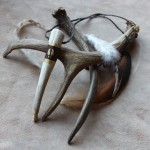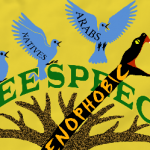What is Seasonally Occurring
The longest night and day on earth occurs at the same time twice a year (approximately every 183 days). Currently in earth’s orbit the Australis Polus Axis will reach a 90° angle toward the sun making the daily turning view of the sun directly overhead with no shadows present at noon along this axis. This being the furthest that the sun is experienced overhead on this end of the planet makes it the longest day of the year for that hemisphere while the opposite hemisphere is experiencing its longest night. Each hemisphere will experience the opposite effects half a year later.

It is during this time of year that Australis sees earth’s daily turning view of the sun at its highest along the north horizon. The Australis Polus Axis it is in the midst of experiencing 24hrs of a measured day for approximately a solid month of solid daylight, while the pole proper has been experiencing this since the Equilux (approx. 3 months earlier). In Australis it is summer with most regions experiencing the wet season in full swing with the tropical rain belt right over head. Australia itself will be getting most of its continental rain in the next couple months.
The equator will be seeing the daily turning view of the sun at its furthest southern point. At this point the Tropical Rain Belt is over the equator and moving toward the Australis Sol Axis.

For Borealis the nights are at their longest with the daily turning view of the sun at its lowest along the south horizon. The Borealis Polus Axis itself is in the middle of having darkness for approximately a solid month, while the pole proper has been experiencing this since the Equinox (approx. 6 months total). For Borealis its most northern regions are snow covered, cold and icy; In its subtropical climates it is the dormant season, and in its tropical climates the new growing season is very near.
Seasonal Customs
Australis is celebrating summer bringing its rains with it.
Australis activities around Lux include: Gathering ripening fruit and other foods in season, decorating with a rainbow of colors (including food) & movement (performers, flags, ribbons, etc.), rogaining race for adolescents with a showering of colored water at the finish line, waterworks, optical illusion displays, body paint art, and so on.
AUSTRALIS
Borealis will be celebrating the ending of the long nights going into longer days.
Borealis activities around Nox include: Bonfires, visiting friends and family, gift giving, symbolic battle between winter and summer, fire dancing, sacrifice of symbolic individual from livestock, fireworks, decorating with lights, bells, evergreens, snowflakes and stars, making custom seasonal lanterns, light parades, snow & ice sculpting, ice skating, sledding, snowball fights, skiing, skijoring, feasts, sweet treats, and kite flying.
BOREALIS
|
CELEBRATION |
GENERAL DATE |
SPECIFIC DATE |
CALENDAR |
REGION OF ORIGIN |
CULTURE |
|
Late December |
December 21st |
unknown |
Turtle Island (North America) |
Zuni & Hopi |
|
|
Late December |
Pecora – Alces 1, December 21st |
Earth |
Saegoah |
||
|
Late December |
December 21st |
Western Europe |
Germanic |
||
|
Late December |
December 21st |
North Western Europe |
Cornish |
||
|
Meán Geimhridh/Midwinter/Alban Arthan |
Late December |
December 21st |
North Western Europe |
Celtic |
|
|
Early January |
January 13th |
Bikrami calendar |
Southern Asia |
Punjabi, Hindu |
|
|
Late December |
December 21st |
unknown |
Northern Europe |
Sami |
|
|
Dongzhi Festival, 冬至, 동지, とうじ, Đông chí |
Late December |
December 21st |
East Asia |
East Asian |
|
|
Goru |
Late December |
unknown |
unknown |
North West Africa |
Dogon |
|
Late December, Early January |
December 26th. Or January 1st |
West Africa |
West African |
||
|
Late December |
December 21st |
Western Asia |
Persian |
||
|
Late December |
December 22nd |
Western Asia |
Kurdish |
||
|
Late December |
December 22nd |
unknown |
North Eastern Europe |
Latvia, Baltic states, Romuva |
Any additional information on cultural seasonal activities and celebrations would be greatly welcomed.

















